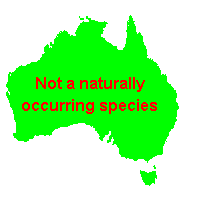General Description:
There is ongoing controversy about whether Melaleuca or Callistemon should be used for the bottlebrush species – see footnote box. Some herbaria have now adopted the name Melaleuca for these plants, however, this reclassification has not been adopted in the Australian Plant Census (which is accepted by ANPSA as the authority on Australian Plant nomenclature).
Although one of the older Callistemon cultivars, Callistemon ‘Violaceus’ is typical of some of the excellent, colourful bottlebrush cultivars and hybrids that have become available in recent years. Similar cultivars include ‘Purple Splendour’, ‘Purple Cloud’ and ‘Mauve Mist’. All of these form dense, bushy shrubs 2-3 metres tall by a similar spread, producing yellow-tipped purple brushes in mid to late spring (October to November). They are hardy shrubs which will withstand at least moderate frost and which flower best in a sunny position.
Like most Callistemon cultivars, C.’Violaceus’ produces viable seed which germinates easily. However, because of seedling variation, any plants produced from this seed will not be identical to the parent plant and cannot be called ‘Violaceus’. Plants produced from cuttings (which usually strike readily) will produce genetically identical plants to the parent. The mauve-red flowers appear in spring.
Many callistemons can tolerate less than perfect drainage but usually perform best in gardens with reasonable drainage and regular availability of water. Callistemons respond well to annual fertilising after flowering and are not as sensitive as some other Australian plants to phosphorus.
Craven’s re-classification has been adopted in a 2013 publication “Melaleucas: their botany, essential oils and uses” by Joseph J. Brophy, Lyndley A. Craven and John C. Doran.

Callistemon ‘Violaceus’
Photo: Brian Walters
 Australian Native Plants Society (Australia)
Australian Native Plants Society (Australia)













